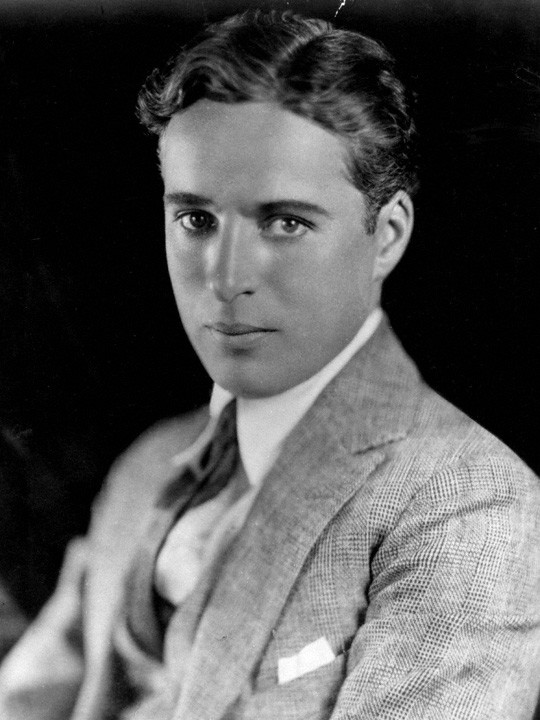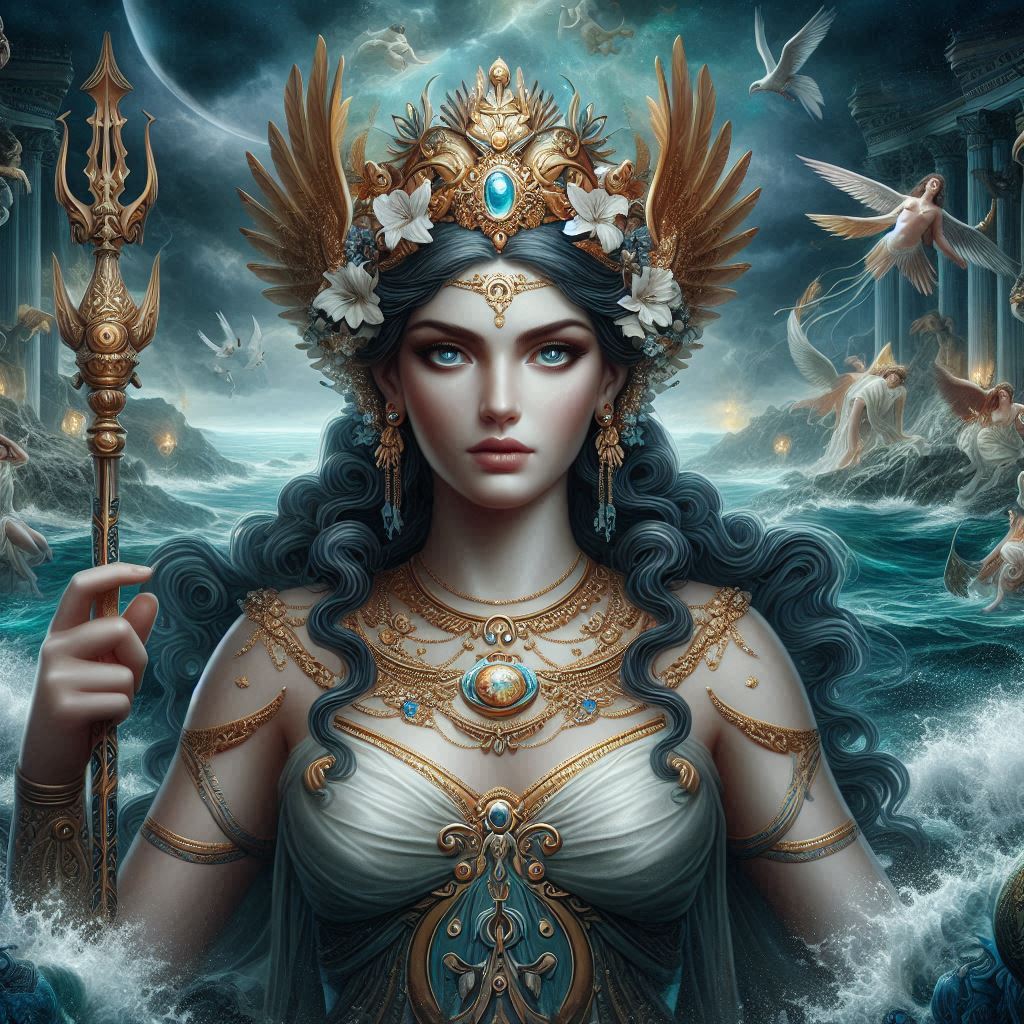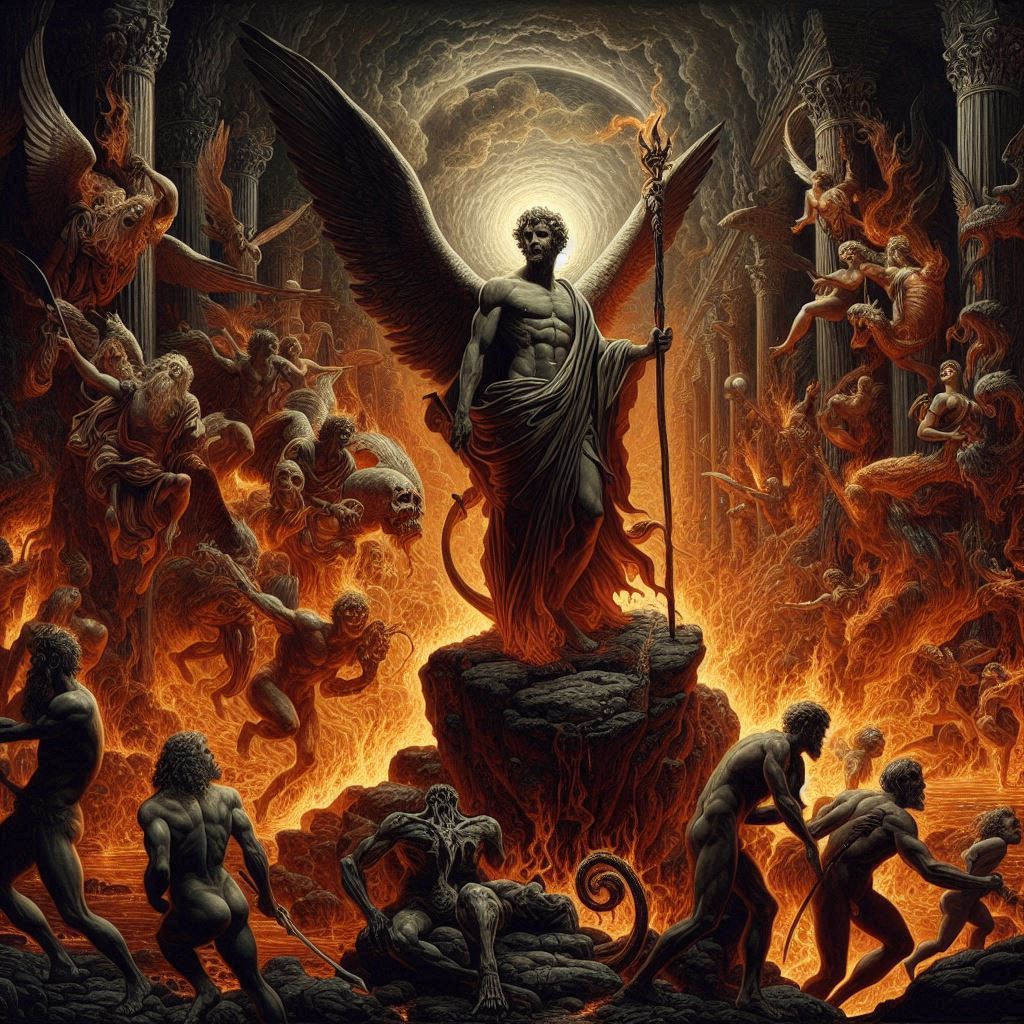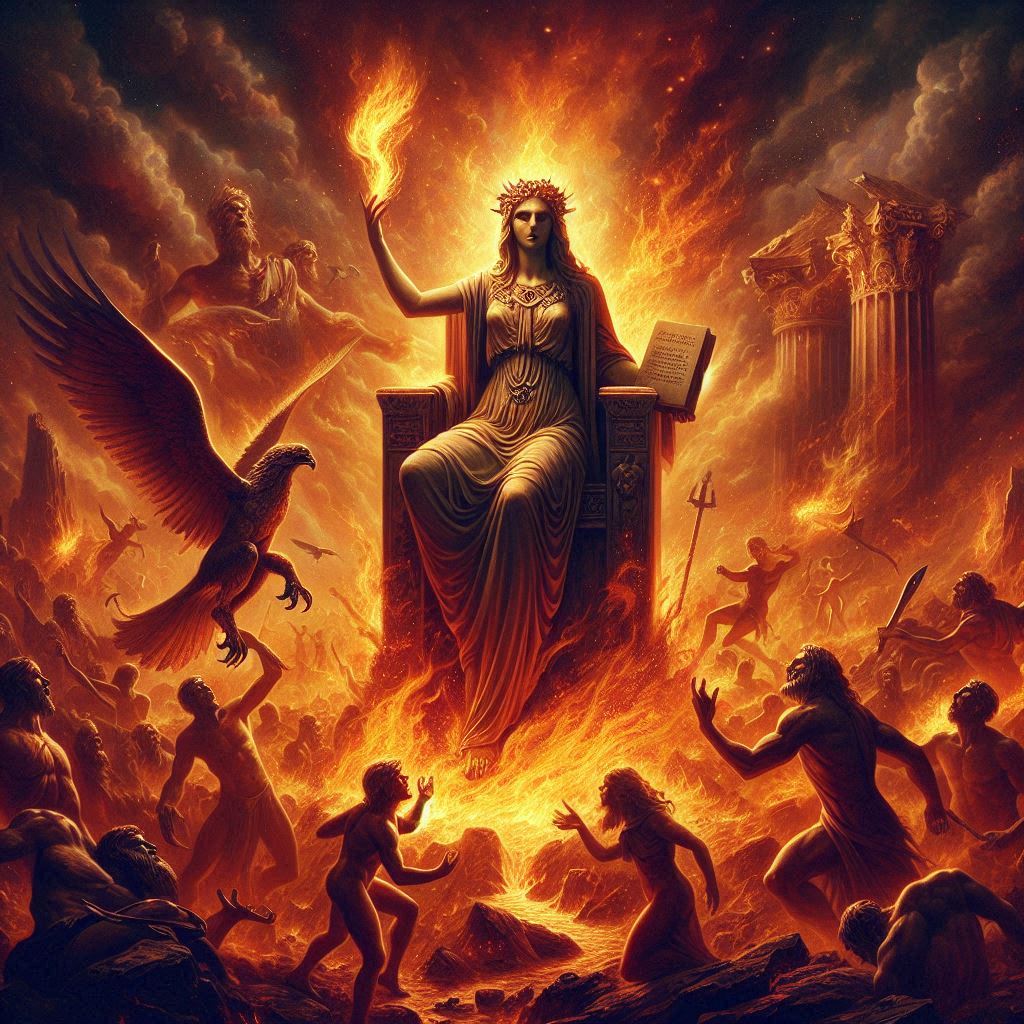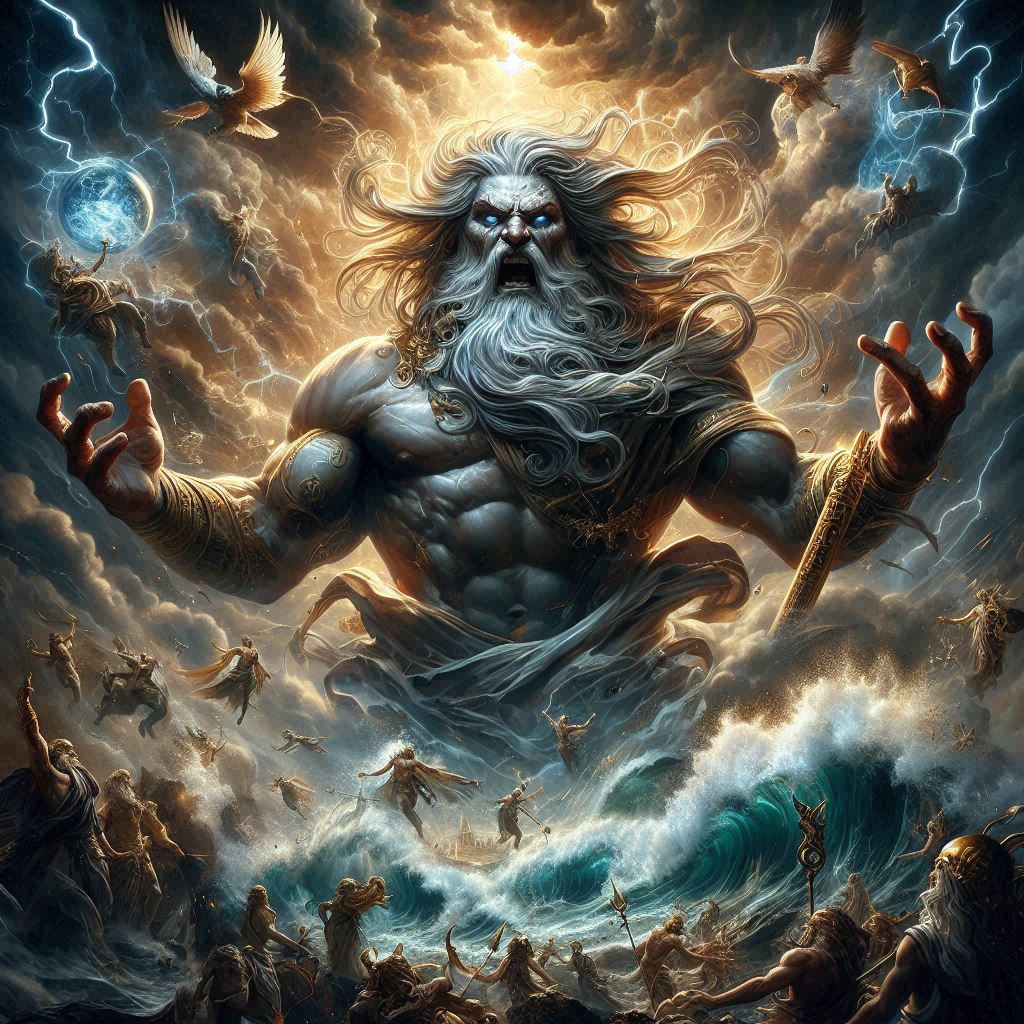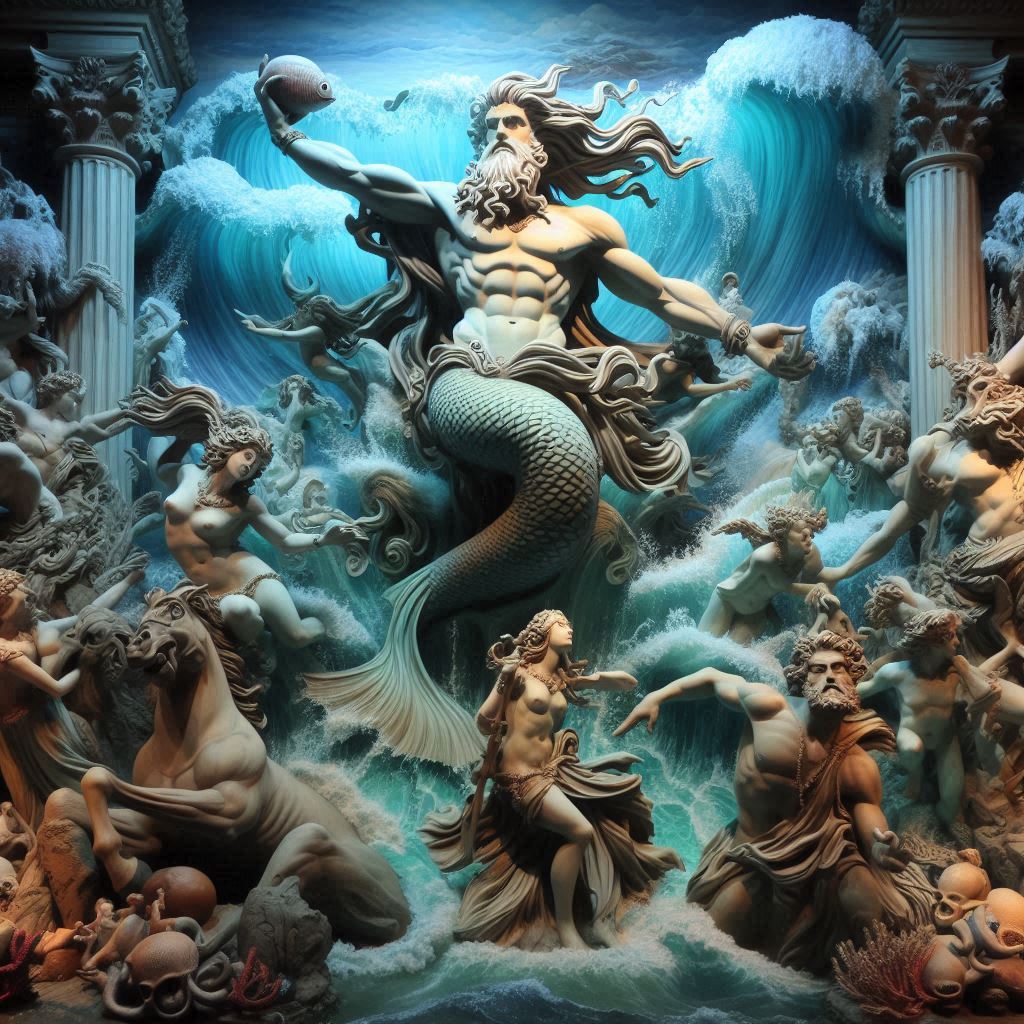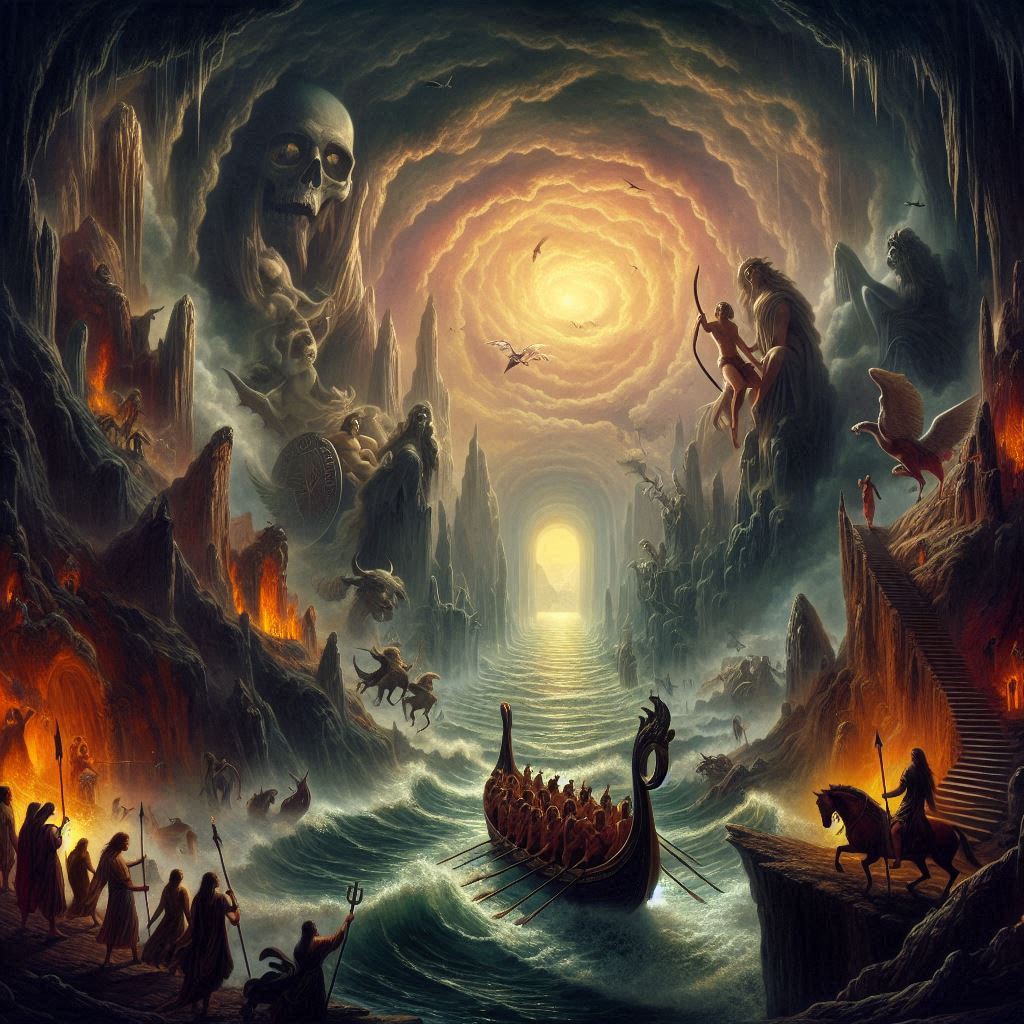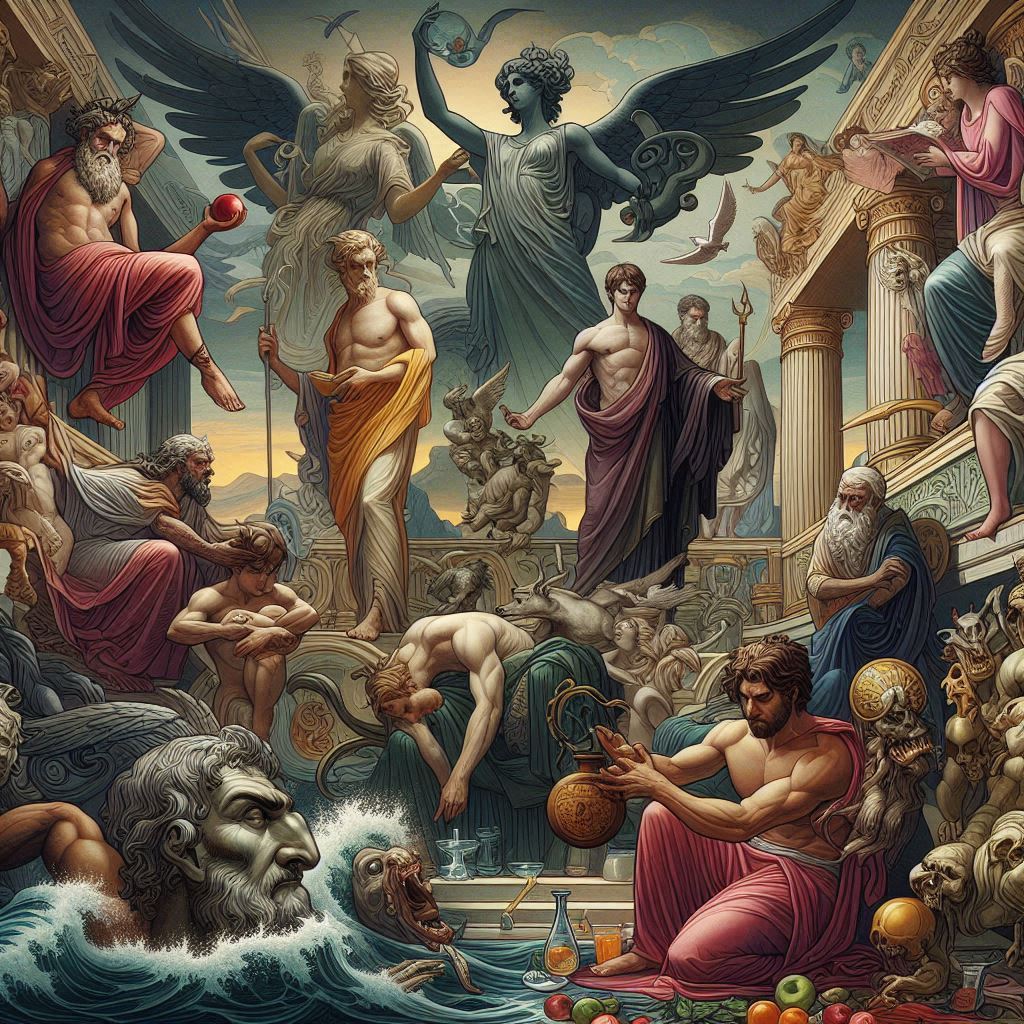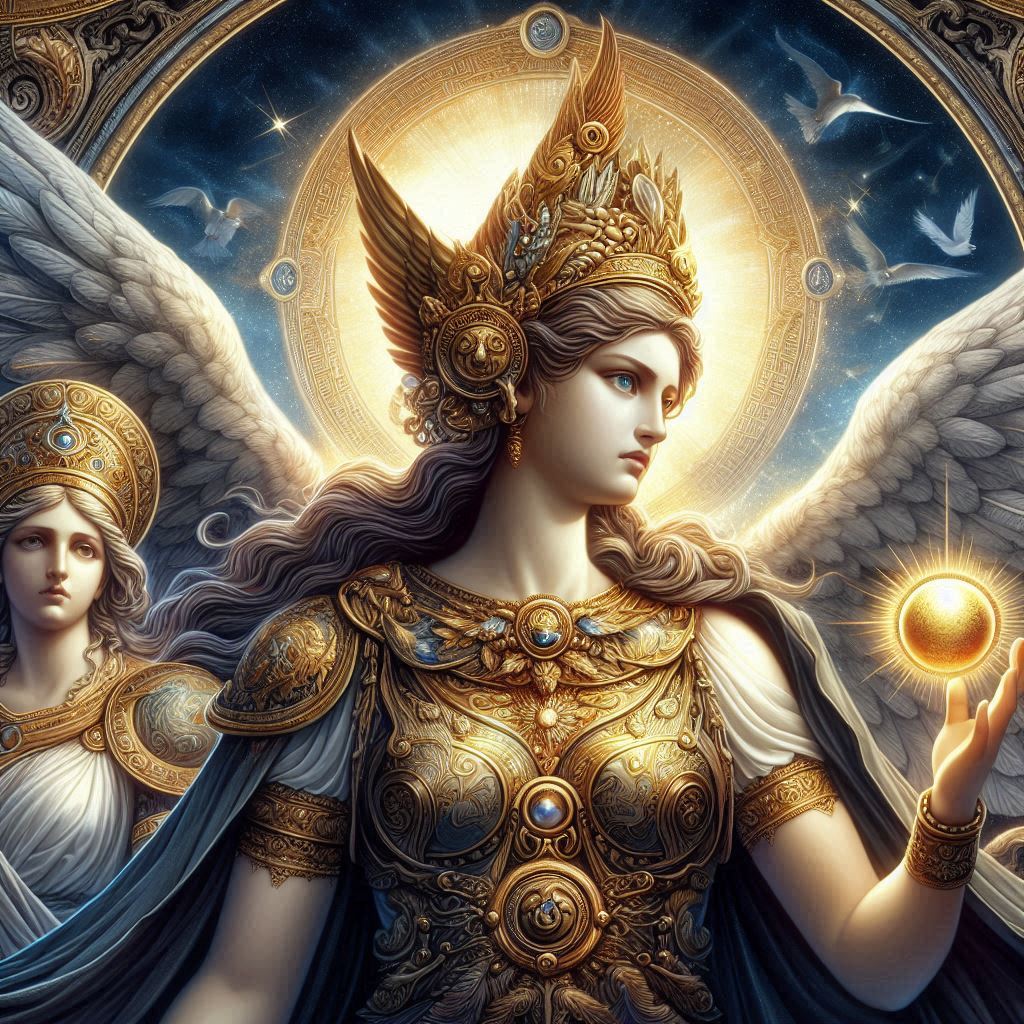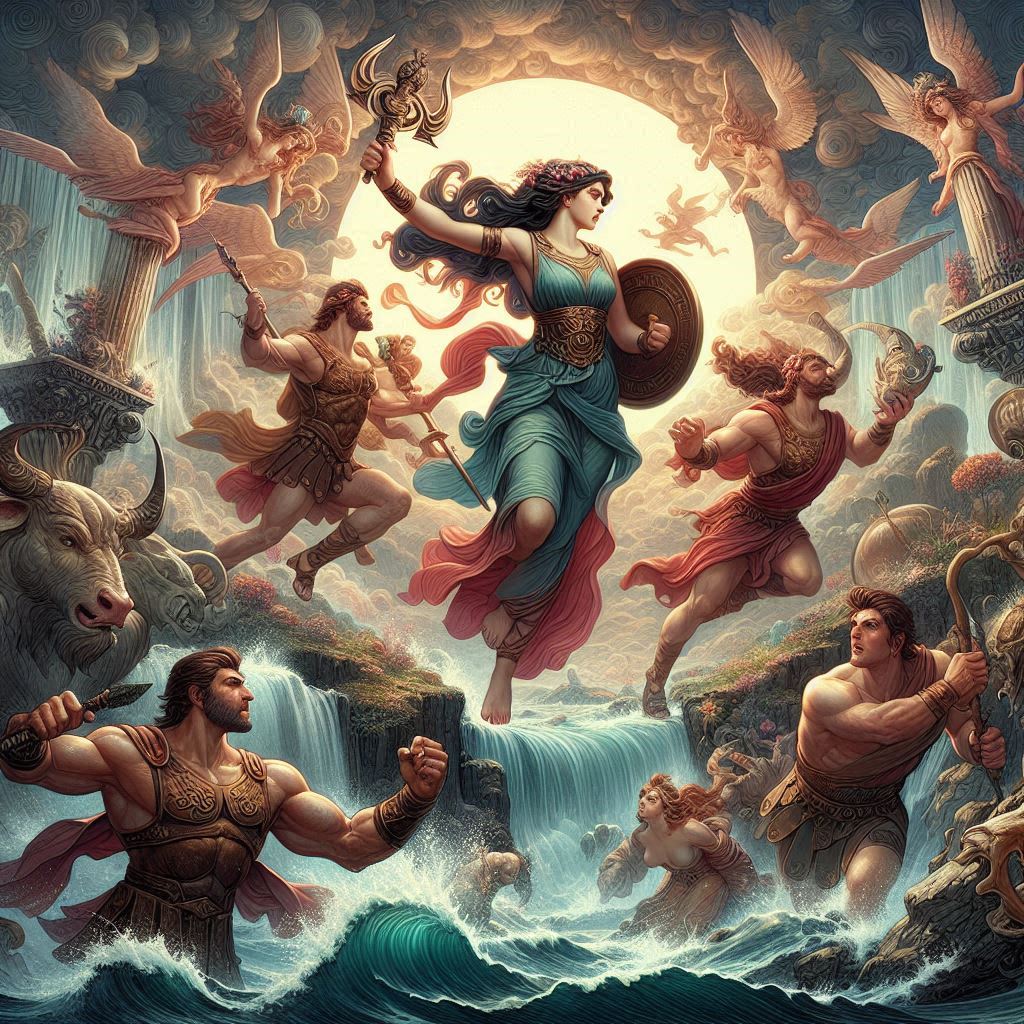Charlie Chaplin (1889-1977) was a English comic actor, filmmaker, and composer who rose to prominence during the silent film era. Renowned for his iconic character “The Tramp,” Chaplin became a global sensation through his innovative and timeless contributions to cinema. His masterpieces include “The Kid,” “City Lights,” and “Modern Times.” Beyond his comedic genius, Chaplin was also a director, writer, and composer, leaving an enduring legacy as one of the most influential figures in the history of film.
Early Life
Charlie Chaplin’s early life was marked by hardship and uncertainty, setting the stage for the remarkable journey that would define his career and legacy. Born on April 16, 1889, in Walworth, London, Charles Spencer Chaplin was the second son of Charles Chaplin Sr. and Hannah Hill. The family’s financial struggles were evident from the start, as both parents worked in the challenging and often precarious world of music hall performances.
Chaplin’s father, Charles Chaplin Sr., was a versatile artist known for his skills as a singer and actor. However, as the family expanded, financial difficulties escalated. By the time Charlie was born, his parents were already grappling with the demands of supporting a growing family amid the unpredictability of show business.
Tragedy struck the Chaplin family when Charlie was just seven years old. His father’s health declined, exacerbating the family’s financial woes. Charles Chaplin Sr. passed away in 1901, leaving Hannah Hill to care for their two sons, Charlie and his older brother Sydney. This devastating loss plunged the family deeper into poverty.
Hannah Hill, Chaplin’s mother, faced her own challenges. Struggling with mental health issues, she found it increasingly difficult to provide a stable home environment for her children. Eventually, her condition necessitated her confinement in a mental institution. With both parents absent, Charlie and Sydney found themselves navigating a world of uncertainty and instability.
The brothers were placed in the care of various relatives and sometimes entered workhouses, experiencing a transient and challenging childhood. This early exposure to poverty and the struggles of the working class would later become recurring themes in Chaplin’s films, influencing his portrayal of the Tramp as an emblematic figure of resilience in the face of adversity.
Despite the challenges, Chaplin discovered his affinity for performing at a young age. His first taste of show business came through a clog-dancing troupe, where he displayed a natural talent for mimicry and physical comedy. This early exposure to the stage ignited a passion for performance that would shape his future.
Chaplin’s journey into the world of entertainment continued when he joined the Eight Lancashire Lads, a juvenile acting group. This experience allowed him to refine his skills and develop a keen understanding of comedic timing. Even in these formative years, his ability to captivate audiences with his humor and expressive physicality hinted at the greatness that lay ahead.
The turning point in Chaplin’s early career came when he caught the attention of the renowned impresario Fred Karno. In 1908, at the age of 19, Chaplin joined Karno’s comedy troupe, marking the beginning of his professional career in the performing arts. Karno’s troupe toured the United States in 1910, exposing Chaplin to American audiences and laying the groundwork for his eventual transition to Hollywood.
Chaplin’s time with Karno’s troupe not only honed his comedic skills but also introduced him to the world of film. During the U.S. tour, film producer Mack Sennett took notice of Chaplin’s talents and offered him a contract with Keystone Studios in 1913. This pivotal moment marked Chaplin’s entry into the world of cinema, setting the stage for the creation of his iconic character, the Tramp, and the establishment of his unparalleled legacy in the film industry.
Music Hall Performer
Charlie Chaplin’s journey into the world of entertainment began in the vibrant and challenging milieu of the music hall, a popular form of theatrical entertainment in the late 19th and early 20th centuries. Born into a family with roots in the music hall tradition, Chaplin’s early exposure to this dynamic and often raucous form of entertainment laid the foundation for his later success as a performer and filmmaker.
The music hall, characterized by a variety of acts including singers, dancers, comedians, and specialty acts, played a crucial role in shaping Chaplin’s artistic sensibilities. His parents, Charles Chaplin Sr. and Hannah Hill, were both performers in the music hall circuit, and it was within this environment that young Charlie was introduced to the world of entertainment.
Charles Chaplin Sr., a talented singer and actor, initially enjoyed success in the music hall scene. However, as the demands of supporting a family intensified, financial challenges mounted. Despite the family’s struggles, the music hall provided a platform for Chaplin’s early exposure to the performing arts. The energetic and lively atmosphere of these venues left an indelible mark on him, influencing his later comedic style and the physicality that would become synonymous with his iconic character, the Tramp.
Tragedy struck the Chaplin family with the death of Charlie’s father in 1901. This event forced the family to confront even greater economic hardship, and it was during these trying times that Chaplin’s resilience and determination began to take shape. His mother’s declining mental health added another layer of complexity to their struggles, creating a tumultuous backdrop against which Chaplin’s early years unfolded.
Chaplin’s entry into the world of professional performance occurred when he joined a clog-dancing troupe at a young age. This early experience allowed him to showcase his natural talent for mimicry and physical comedy. The music hall tradition, with its emphasis on variety and crowd-pleasing acts, provided a fertile ground for Chaplin to develop his comedic instincts and stage presence.
By the age of 13, Chaplin had joined the Eight Lancashire Lads, a juvenile acting group. This marked a significant step in his artistic development, as he began to explore the nuances of character and hone his skills in front of live audiences. His performances with the group showcased his ability to connect with audiences through humor and emotion, setting the stage for his future success on both stage and screen.
The turning point in Chaplin’s music hall career came when he caught the eye of Fred Karno, a renowned impresario known for his comedy troupes. In 1908, Chaplin joined Karno’s company, embarking on a tour that would take him to the United States. Karno’s influence on Chaplin’s comedic style was profound, as he learned the art of pantomime and refined his ability to elicit laughter through physical comedy.
The U.S. tour with Karno’s troupe in 1910 exposed Chaplin to American audiences and marked the beginning of his association with the burgeoning film industry. Film producer Mack Sennett, impressed by Chaplin’s talents, offered him a contract with Keystone Studios in 1913. This transition from the music hall to the world of silent cinema catapulted Chaplin into a new realm of artistic expression, where his unique blend of humor, pathos, and social commentary would make an indelible mark on the history of film.
Chaplin’s early experiences in the music hall not only shaped his comedic sensibilities but also instilled in him a deep appreciation for the transformative power of performance. The energy, spontaneity, and connection with diverse audiences that he experienced in these early years would become integral to his success as a music hall performer and, ultimately, as a cinematic pioneer.
Hollywood Breakthrough
Charlie Chaplin’s Hollywood breakthrough marked a defining moment in the history of cinema, propelling him from the stages of the music hall to the silver screen and establishing him as an enduring icon. The transition to Hollywood not only showcased Chaplin’s exceptional talent but also revolutionized the comedic landscape in the emerging world of silent cinema.
In 1913, Mack Sennett, a prominent figure in the film industry and the head of Keystone Studios, recognized Chaplin’s comedic genius during his U.S. tour with Fred Karno’s comedy troupe. Sennett wasted no time in offering Chaplin a contract, marking the beginning of the young performer’s Hollywood journey. Chaplin’s film debut came in the short film “Making a Living” (1914), where he played a rather unsympathetic character. However, it wasn’t until the following year that he created the character that would define his career – the Tramp.
The Tramp made his first appearance in the film “Kid Auto Races at Venice” (1914). With his distinctive bowler hat, ill-fitting clothes, toothbrush mustache, and signature waddle, the Tramp immediately captured the hearts of audiences. Chaplin’s ability to blend humor with an underlying pathos, portraying a lovable yet hapless character, set him apart in the burgeoning world of silent cinema.
Chaplin’s early films with Keystone Studios, including “The Tramp” (1915) and “The Bank” (1915), showcased his remarkable physicality, comedic timing, and improvisational skills. The Tramp character became a universal symbol of the downtrodden but resilient everyman, navigating a world filled with absurdity and challenges. Audiences were drawn to Chaplin’s unique blend of slapstick comedy and poignant social commentary, reflecting the struggles and hopes of the time.
As Chaplin’s popularity soared, so did his creative ambitions. In 1916, he signed with the Mutual Film Corporation for a then-unprecedented salary, gaining greater artistic control over his work. This collaboration resulted in a series of timeless classics, including “The Vagabond” (1916), “Easy Street” (1917), and “The Immigrant” (1917). These films further solidified Chaplin’s status as a cinematic innovator and solidified the Tramp’s place in the hearts of audiences worldwide.
The year 1919 marked a pivotal moment in Chaplin’s career. Alongside fellow film luminaries Mary Pickford, Douglas Fairbanks, and D.W. Griffith, Chaplin co-founded United Artists, a film distribution company that granted artists unprecedented control over their work. This move empowered Chaplin to take creative risks and explore more complex narratives.
“The Kid” (1921), Chaplin’s first full-length feature film, exemplified this shift. The film, blending humor and sentimentality, followed the Tramp’s unlikely bond with an abandoned child. Chaplin’s exploration of poverty, orphanhood, and the redemptive power of love struck a chord with audiences and critics alike. “The Kid” not only showcased Chaplin’s versatility as a filmmaker but also demonstrated his ability to use comedy as a powerful medium for social commentary.
Chaplin’s Hollywood breakthrough continued with masterpieces like “The Gold Rush” (1925), a film that combined humor, romance, and adventure against the backdrop of the Klondike Gold Rush. The iconic scenes, such as the dance of the dinner rolls and the perilous cabin teetering on the edge of a cliff, remain etched in cinematic history. “The Gold Rush” solidified Chaplin’s reputation as a visionary storyteller and further elevated the Tramp as a cultural phenomenon.
The transition to sound in the late 1920s posed a challenge for many silent film stars, but Chaplin embraced this new era with confidence. In 1931, he released “City Lights,” a silent film released well into the talkie era. The film, featuring the Tramp’s encounters with a blind flower girl, seamlessly blended comedy and pathos, proving that the art of visual storytelling could transcend the spoken word.
Chaplin’s Hollywood breakthrough not only transformed him into one of the highest-paid and most influential figures in the film industry but also elevated silent comedy to an art form. His ability to connect with audiences on a profound emotional level, coupled with his commitment to social commentary, ensured that Chaplin’s impact on cinema would endure for generations to come.
Pioneering Silent Films
Charlie Chaplin’s pioneering silent films stand as a testament to his unparalleled contribution to the world of cinema during the golden age of silent movies. In the early 20th century, as the film industry was still finding its artistic language, Chaplin emerged as a cinematic innovator, crafting stories that transcended language barriers and resonated with audiences globally.
Chaplin’s breakthrough into the world of silent films occurred in the early 1910s, when he signed with Keystone Studios under the direction of Mack Sennett. The Tramp, Chaplin’s iconic character, made his first appearance in “Kid Auto Races at Venice” (1914), introducing audiences to a lovable, yet downtrodden, figure with a distinctive look and endearing mannerisms.
Chaplin’s early silent shorts with Keystone, such as “The Tramp” (1915) and “The Immigrant” (1917), showcased his comedic genius and established the foundations of his cinematic style. The Tramp, with his bowler hat, toothbrush mustache, and shabby attire, became a universal symbol of the human struggle against life’s adversities. Chaplin’s ability to elicit laughter through physical comedy, combined with his keen understanding of human emotions, set him apart in a rapidly evolving industry.
As Chaplin’s popularity soared, he transitioned to the Mutual Film Corporation in 1916, signing a groundbreaking contract that granted him unprecedented creative control. This period produced some of his most enduring works, including “The Vagabond” (1916) and “Easy Street” (1917). In these films, Chaplin not only entertained but also explored social issues of the time, injecting subtle commentary on poverty, inequality, and the human condition into his narratives.
In 1919, Chaplin took a monumental step by co-founding United Artists, a film distribution company that allowed artists to retain control over their work. This move marked a turning point in the history of cinema, empowering filmmakers to pursue their creative visions independently. Chaplin’s involvement in United Artists signaled a commitment to artistic freedom and paved the way for future generations of filmmakers to break free from studio constraints.
One of Chaplin’s groundbreaking silent features was “The Kid” (1921), which marked his directorial debut in feature-length films. In this poignant blend of comedy and drama, Chaplin portrayed the Tramp raising an abandoned child, exploring themes of poverty, family, and societal redemption. “The Kid” not only showcased Chaplin’s versatility as a filmmaker but also demonstrated the emotional depth that silent cinema could achieve.
“The Gold Rush” (1925) stands as another pinnacle of Chaplin’s silent film era. Set against the backdrop of the Klondike Gold Rush, the film combined humor, romance, and adventure, creating iconic moments that remain embedded in cinematic history. Chaplin’s dance of the dinner rolls and the celebrated cabin teetering on the edge of a cliff showcased his mastery of physical comedy and visual storytelling.
The silent film era reached its zenith with “City Lights” (1931), a silent film released years after the advent of talkies. Chaplin’s decision to maintain a silent format in the face of evolving technology demonstrated his unwavering commitment to the expressive power of pantomime. “City Lights” is a poignant tale of the Tramp’s unlikely friendship with a blind flower girl, seamlessly blending laughter and tears to create a timeless masterpiece.
Chaplin’s pioneering silent films not only entertained audiences but also laid the groundwork for the evolution of cinematic storytelling. His ability to convey complex emotions and social commentary without spoken words showcased the universal language of visual storytelling. Chaplin’s impact extended beyond the silent era, influencing generations of filmmakers who would build upon his legacy in the transition to sound and the subsequent evolution of cinema.
As silent films gave way to the talkie era, Chaplin’s contributions remained eternally relevant. His innovation, both in front of and behind the camera, left an indelible mark on the history of cinema, shaping the medium into an art form that transcends language and cultural boundaries. Charlie Chaplin’s silent films continue to be celebrated as timeless classics, a testament to his pioneering spirit and enduring influence on the world of entertainment.
Studio and Autonomy
Charlie Chaplin’s establishment of United Artists marked a pivotal moment in his career and in the history of filmmaking. Founded in 1919, United Artists was a collaborative venture between Chaplin and three other influential figures in the film industry: Mary Pickford, Douglas Fairbanks, and D.W. Griffith. This groundbreaking studio was not just a business venture; it represented a bold move toward creative autonomy for filmmakers in an industry dominated by powerful studios.
At the time of United Artists’ creation, the film industry was characterized by studio-dominated structures, where major production companies held considerable control over the creative process. Studios dictated casting choices, controlled budgets, and shaped the direction of films. Chaplin, known for his artistic integrity and desire for creative freedom, sought an alternative approach. United Artists became a haven for artists looking to break away from the constraints of studio interference.
The four founders of United Artists, often referred to as the “Big Four,” each brought unique talents and perspectives to the table. Chaplin, with his innovative approach to silent comedy and his beloved Tramp character, was a driving force behind the studio’s formation. Mary Pickford, known as “America’s Sweetheart,” was a legendary actress and producer, Fairbanks, the “King of Hollywood,” was a charismatic leading man, and Griffith was a pioneering director and producer.
United Artists operated on a simple principle: giving creative control to the artists themselves. Filmmakers retained ownership of their projects, had a say in casting decisions, and maintained control over the artistic direction of their films. This was a revolutionary concept that went against the prevailing industry norms.
For Chaplin, the establishment of United Artists came at a crucial point in his career. Already a major star and creative force in silent cinema, he sought the freedom to experiment with longer, more elaborate films. The formation of United Artists allowed him to do just that. With this newfound autonomy, Chaplin was able to explore themes beyond traditional slapstick comedy, delving into deeper, more complex narratives that combined humor with social commentary.
One of the first films produced under United Artists was Chaplin’s “The Kid” (1921), marking his directorial debut in feature-length films. The success of this emotionally resonant and socially relevant film demonstrated the artistic possibilities that arise when filmmakers have control over their work. “The Kid” was a critical and commercial triumph, solidifying Chaplin’s reputation as a visionary director.
United Artists continued to be a platform for Chaplin’s creative expression, allowing him to push the boundaries of silent filmmaking. “The Gold Rush” (1925), with its iconic scenes and masterful storytelling, further demonstrated the potential of films produced outside the studio system. Chaplin’s ability to seamlessly blend comedy with social commentary reached new heights, challenging the notion that silent cinema was limited in its ability to convey complex narratives.
While United Artists faced challenges over the years, including financial difficulties and shifts in leadership, its legacy endured as a symbol of artistic independence. The studio continued to produce films that reflected the unique visions of its founders, contributing to the diversity of cinematic storytelling during a period of profound transformation in the industry.
Chaplin’s commitment to creative autonomy at United Artists not only influenced his own work but also set a precedent for future filmmakers. The studio provided a template for artists seeking control over their projects and the opportunity to explore unconventional narratives. This pioneering spirit continues to resonate in the modern film industry, where filmmakers strive for creative freedom and control over their artistic visions.
Transition to Sound
The transition to sound marked a seismic shift in the film industry, challenging silent film stars and studios to adapt to the advent of synchronized soundtracks. For Charlie Chaplin, a cinematic luminary known for his silent masterpieces, this era presented both a creative challenge and an opportunity for reinvention.
Chaplin’s resistance to the integration of sound in his films was well-known. Silent cinema had been his domain, where he perfected the art of visual storytelling and connected with audiences on a global scale without the need for spoken words. However, as the late 1920s ushered in the era of sound cinema, Chaplin found himself at a crossroads.
In 1927, Warner Bros. released “The Jazz Singer,” the first feature-length film with synchronized dialogue sequences. The success of this pioneering “talkie” marked a turning point in the industry, prompting studios to rapidly adopt sound technology. Chaplin, however, remained steadfast in his commitment to the silent format, releasing “City Lights” (1931) as a silent film in a time when talkies had become the norm.
“City Lights” showcased Chaplin’s mastery of visual storytelling and pantomime. The film, featuring the Tramp’s interactions with a blind flower girl, demonstrated that the emotional depth achieved in silent cinema could rival or even surpass the impact of spoken words. The decision to release “City Lights” as a silent film amidst the talkie revolution was a testament to Chaplin’s artistic vision and his belief in the enduring power of silent storytelling.
It wasn’t until his next film, “Modern Times” (1936), that Chaplin reluctantly embraced sound in a significant way. “Modern Times” marked the first film where audiences heard Chaplin’s voice, albeit in a non-dialogue context. The film featured synchronized sound effects, music, and Chaplin’s own composed score. Despite this incorporation of sound elements, the Tramp remained a silent character, relying on visual gags and physical comedy to convey the narrative.
Chaplin’s hesitance to fully embrace spoken dialogue for the Tramp wasn’t merely a matter of nostalgia. He believed in the universal language of silent cinema, which allowed his films to resonate with diverse audiences around the world. The Tramp’s silent expressions, physical gestures, and emotive performances transcended language barriers, making Chaplin a global cinematic phenomenon.
In “The Great Dictator” (1940), Chaplin took a bold step by fully embracing the possibilities of sound. This satirical masterpiece featured Chaplin playing dual roles, including a character with spoken dialogue. The film’s powerful final speech, a plea for peace, tolerance, and humanity, delivered by Chaplin as both a Jewish barber and a Hitler-like dictator, showcased the potential for spoken words to convey profound messages.
“The Great Dictator” not only demonstrated Chaplin’s versatility in the sound era but also reaffirmed his ability to use humor as a tool for social commentary. Despite his initial reservations, Chaplin had successfully navigated the transition to sound while maintaining the integrity of his artistic voice.
Chaplin’s later works, such as “Monsieur Verdoux” (1947) and “Limelight” (1952), further incorporated spoken dialogue, showcasing his adaptability to the evolving cinematic landscape. However, these films also revealed a nostalgia for the silent era, with Chaplin occasionally revisiting the iconic Tramp character.
While the transition to sound presented challenges for many silent film stars, Chaplin’s ability to navigate this shift without compromising his artistic identity is a testament to his genius. His contribution to the evolution of cinema extends beyond silent films, as he continued to captivate audiences through the innovative use of sound, proving that the language of Chaplin’s comedy could transcend the silent era and remain relevant in the ever-changing world of filmmaking.
Personal Life and Controversies
Charlie Chaplin’s personal life was marked by a series of marriages, controversies, and legal battles, adding layers of complexity to the iconic figure known for his on-screen humor and creative brilliance.
Chaplin’s first marriage in 1918 was to Mildred Harris, a young actress. However, the union proved tumultuous and short-lived, ending in divorce in 1920. This early experience of marital discord set the stage for Chaplin’s complicated relationships in the years to come.
His second marriage, to Lita Grey in 1924, was particularly scandalous. Lita, who was just 16 at the time of their union, accused Chaplin of infidelity and cruelty in the divorce proceedings. The highly publicized legal battle and the details that emerged during the trial tarnished Chaplin’s public image. Despite the controversy, the couple had two sons, Charles Chaplin Jr. and Sydney Chaplin, who later pursued careers in the entertainment industry.
In 1936, Chaplin married again, this time to actress Paulette Goddard. The marriage, which lasted until 1942, brought relative stability to Chaplin’s personal life. However, it too ended in divorce, contributing to the pattern of tumultuous relationships that characterized his romantic history.
One of the most controversial aspects of Chaplin’s personal life was his attraction to younger women. His romantic involvement with women considerably younger than him became a subject of public scrutiny and criticism. The relationships with Mildred Harris and Lita Grey, both of whom were significantly younger than Chaplin, fueled tabloid gossip and affected his public image.
The political climate of the time also played a role in shaping public perceptions of Chaplin. As the United States entered World War II and the Cold War era, Chaplin’s political views became a source of controversy. His outspoken opposition to fascism and his call for peace and tolerance in “The Great Dictator” (1940) drew attention from authorities, leading to accusations of being a communist sympathizer.
Chaplin’s political stance and personal life came under intense scrutiny during the post-war years. In the early 1950s, at the height of McCarthyism and anti-communist sentiments in the United States, he faced allegations of being a subversive figure. The Federal Bureau of Investigation (FBI) kept a close watch on Chaplin, and he was denied re-entry into the United States after a trip to Europe in 1952. Faced with mounting pressure and controversy, Chaplin chose to settle in Switzerland, where he lived in self-imposed exile.
Despite the controversies that surrounded Chaplin’s personal life, his creative output continued. Films like “Limelight” (1952) and “A King in New York” (1957) reflected his reflections on fame, societal norms, and personal experiences. The themes explored in these films, coupled with his ability to navigate personal challenges, added a layer of introspection to his later works.
Chaplin’s personal life and controversies did not overshadow his impact on the world of cinema. In 1972, he received an Honorary Academy Award and was welcomed back to the United States, bringing a sense of closure to his tumultuous relationship with the country that had once embraced him.
Charlie Chaplin’s personal life was undeniably complex, marked by romantic entanglements, legal battles, and political controversies. While these aspects of his life generated headlines and speculation, they cannot overshadow the enduring legacy of his contributions to film and comedy. Chaplin’s ability to navigate personal challenges and maintain his artistic vision attests to his resilience and enduring impact on the world of entertainment.
Exile from the U.S
Charlie Chaplin’s exile from the United States in the early 1950s marked a tumultuous chapter in the life of the iconic filmmaker and comedian. The political climate of the time, characterized by McCarthyism and anti-communist fervor, played a significant role in shaping the events that led to Chaplin’s departure from the country where he had achieved fame and success.
Chaplin’s political views had long been a source of controversy. His outspoken opposition to fascism and his call for peace and tolerance in his film “The Great Dictator” (1940) drew attention, but it was during the post-war years that he faced heightened scrutiny. As Cold War tensions escalated, the U.S. government intensified its efforts to root out perceived communist sympathizers.
In the early 1950s, Chaplin’s association with left-leaning political causes and his refusal to conform to prevailing ideologies attracted the attention of government authorities. The Federal Bureau of Investigation (FBI) had been monitoring Chaplin for years, and in 1947, he was called to testify before the House Un-American Activities Committee (HUAC). During his testimony, Chaplin defended his right to hold his own political beliefs but refused to cooperate with the committee’s inquiries into his personal and political associations.
The HUAC hearings fueled anti-communist sentiment, and Chaplin found himself under increasing scrutiny. In 1952, while on a trip to Europe with his family, the U.S. government informed him that he would not be allowed to re-enter the country. This abrupt denial of re-entry marked the beginning of Chaplin’s self-imposed exile.
Chaplin chose to settle in Switzerland, where he lived with his family for the next two decades. The decision to remain in Europe reflected both a practical response to the political climate in the United States and a personal choice to distance himself from the controversies that had surrounded him. Despite being physically removed from Hollywood, Chaplin continued to work on films while in exile, directing and starring in productions such as “Limelight” (1952) and “A King in New York” (1957).
The exile from the United States deeply affected Chaplin on a personal and professional level. It marked the end of an era for a man who had risen to fame in Hollywood, creating timeless characters like the Tramp and contributing significantly to the art of cinema. The separation from the country where he had achieved so much success was a poignant moment in Chaplin’s life.
During this period of exile, Chaplin faced financial challenges and had to navigate the complexities of being denied entry into the United States, a place he had once called home. The political climate slowly evolved over the years, and as attitudes softened, Chaplin was eventually invited back to the United States.
In 1972, after more than two decades in exile, Chaplin received an Honorary Academy Award, and he returned to the country that had once rejected him. The ceremony, held at the Oscars, saw the audience giving Chaplin a standing ovation that lasted for several minutes, symbolizing a recognition of his immense contributions to the world of cinema.
Charlie Chaplin’s exile from the United States remains a poignant episode in the broader context of McCarthyism and the Red Scare. It speaks to the challenges faced by artists and intellectuals during a period of intense political paranoia, as well as the resilience of a man whose creative spirit endured despite the personal and professional hurdles he faced.
Legacy and Impact
Charlie Chaplin’s legacy is an indelible mark on the world of cinema, characterized by groundbreaking contributions to film, timeless characters, and a unique blend of comedy and social commentary. His impact goes far beyond the silent era of Hollywood, resonating through generations and across cultural boundaries, making him one of the most iconic figures in the history of entertainment.
Chaplin’s enduring legacy is anchored in his groundbreaking contributions to cinematic storytelling. As a pioneer of silent cinema, he elevated the art form through his innovative use of physical comedy, expressive pantomime, and visual storytelling. The creation of his iconic character, the Tramp, marked a turning point in the evolution of on-screen personas. The Tramp, with his bowler hat, toothbrush mustache, and ill-fitting clothes, became a universal symbol of the human spirit’s resilience in the face of adversity.
Chaplin’s impact on comedy cannot be overstated. His ability to blend laughter with poignancy, using humor as a vehicle for social commentary, set a standard for comedic storytelling. The Tramp’s misadventures reflected the struggles of the common man, offering both comic relief and a mirror to societal challenges. Chaplin’s innovative approach to comedy influenced countless comedians and filmmakers who followed, shaping the comedic landscape for decades to come.
Beyond entertainment, Chaplin’s films served as a powerful medium for social commentary. In classics like “Modern Times” (1936) and “The Great Dictator” (1940), he addressed issues of industrialization, dehumanization, and the rise of totalitarianism. “The Great Dictator” remains a particularly impactful work, using satire to critique fascism and champion democratic ideals. Chaplin’s courage in confronting political issues through his art showcased the potential of cinema as a tool for societal reflection and change.
Chaplin’s legacy extends to his influence on the art of acting. Through the Tramp, he demonstrated the power of nonverbal communication and physical expressiveness, emphasizing the emotional impact of a performance. His ability to convey complex emotions without spoken words set a standard for actors in the silent era and beyond. The Tramp’s iconic gestures and expressions have become part of the cinematic lexicon, influencing generations of performers.
In addition to his creative contributions, Chaplin’s impact is evident in his role as a filmmaker with a social conscience. He used his celebrity and influence to advocate for causes he believed in, including labor rights, peace, and humanitarian efforts. His willingness to engage with political and social issues demonstrated a commitment to using his platform for positive change.
Chaplin’s legacy is also marked by his entrepreneurial spirit. His co-founding of United Artists in 1919, along with Mary Pickford, Douglas Fairbanks, and D.W. Griffith, represented a bold move toward giving artists greater control over their work. This collaborative venture empowered filmmakers to pursue their creative visions independently, setting a precedent for artistic autonomy in the film industry.
The global appeal of Chaplin’s work speaks to the universality of his themes and characters. The Tramp’s journey resonates across cultures, transcending language barriers and geographical boundaries. Chaplin’s films have continued to find new audiences, ensuring that his impact endures in the digital age, where his work is readily accessible to viewers around the world.
Charlie Chaplin’s legacy is a multifaceted tapestry that encompasses artistic innovation, social consciousness, and a timeless comedic sensibility. His impact on the film industry, the art of comedy, and the broader cultural landscape remains immeasurable. Chaplin’s legacy lives on not only in the films he created but also in the enduring influence he has had on the language of cinema and the hearts of audiences worldwide.
